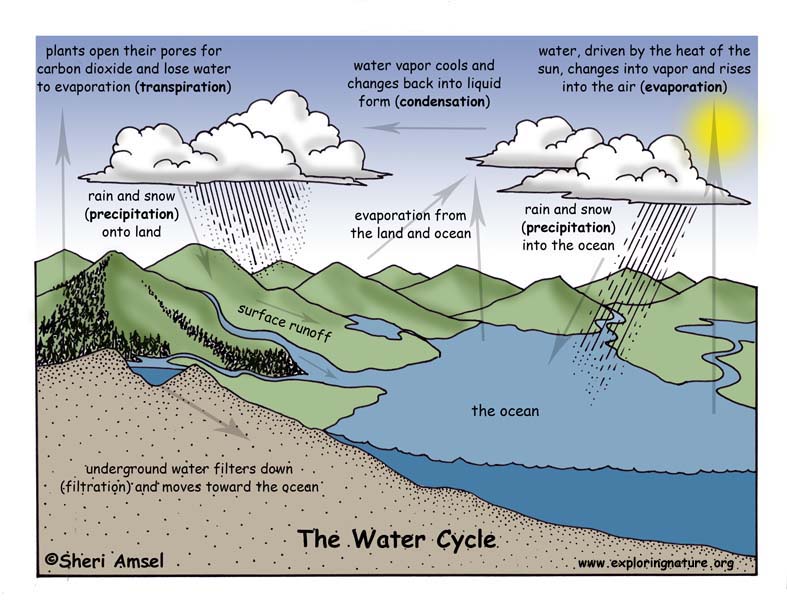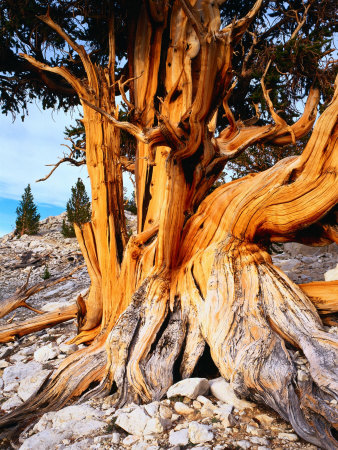دنیای زبان انگلیسی ( بهروزپور )
لغات و اصطلاح .داستان کوتاه . شعر.جوک .ضرب المثل.اشپزی.رمان. نمایشنامه.متن دوزبانهدنیای زبان انگلیسی ( بهروزپور )
لغات و اصطلاح .داستان کوتاه . شعر.جوک .ضرب المثل.اشپزی.رمان. نمایشنامه.متن دوزبانهروزانهها
همه- queen.blogfa.com
- وبلاگ زبان انگلیسی دبیرستان سمپاد ملایر
- Join to English
- *´`·.. • • • POEM • • •..·´`*
- rasol academy
- poem
- آموزش زبان انگلیسی
- تدریس و ترجمه کلیه زبانها
- دهکده انگلیسی
- یادداشتهای هماره
- دانشجویان زبان انگلیسی
- شهرزبان
- دبیری زبان دانشگاه فرهنگیان
- English Barobax
- دنیای زبان من: آموزش زبان های خارجه
- وبلاگ آی زبان
- موفقیت من و تو در یادگیری زبان اموزش زبان
- خاطرات خاله نرگس
- دیدنی ها
- English village
- Language Garden
- وبلاگ پرویز ولد خانی
- سایه روشن
- اموزش زبان انگلیسی البیون
- جهان آموزش
- بهترین سایت آموزش انگلیسی رایگان و بزرگترین انجمن ایرانیان علاقه مند به انگلیسی
- خیابان انگلیسی
- آموزش زبان انگلیسی و فرانسه
- کتاب الکترونیکی زبان من /بهروزپور
- بغض چشم
- اموزش زبان انگلیسی دیالوگ
- زبان شناس آینده
- کتابخانه مجازی اموزش زبان لایبر
- love
- ترجمه انگلیسی قران
- An English Translator
- موفقیت من و تو در یادگیری زبان اموزش زبان
- مجموعه کتابهای الکترونیکی دانش و زندگی/رضا فریدون نژاد
- تخصصی کارشناسی ارشد ادبیات فارسی
- وبلاگ سمیرحسین نژاد
- نماز و نیایش
- مترجمی زبان انگلیسی - پیام نور اهواز
- وبلاگ ali rahimian
- در این وبلاک از جون آدمی زاد تا شیر مر غ می توان یافت
- دنیای زبان انگلیسی(رضایی)
- کالج زبان چهار دانگه
- Where a rainbow of our ideas is formed
- engelisi baraye jahane emrooz
- آموزش نرم افزار CATIA
- ترجمه انگلیسی قران
پیوندها
- معما
- شعر
- گرامر
- دیباچه
- fiction
- poetry
- poems
- کتاب نیوز
- دیکشنری
- کتاب سبز
- ازمون تافل
- تاریخ فلسفه
- Food Idioms
- نمایشنامه ها
- sms انگلیسی
- کتابهای صوتی
- تبیان انگلیسی
- Literary Terms
- اصطلاحات ادبی
- اشعار انگلیسی
- ادبیات انگلیسی
- دیکشنری انلاین
- ادبیات انگلیسی
- اموزش انگلیسی
- دنیای ضرب المثل
- تمام اثار شکسپیر
- یادگیری انگلیسی
- دیکشنری تصویری
- دیکشنری تصویری
- business writing
- اشپزی (انگلیسی)
- 180 شعر انگلیسی
- دانلودکتابهای صوتی
- رسم الخط انگلیسی
- آموزش گرامر تصویری
- مکالمه های انگلیسی
- انگلیسی برای کودکان
- سایت سهراب سپهری
- The Quotations Page
- نویسندگان مشهور جهان
- دیکشنری تصویری اینترنتی
- توانایی های ضروری زندگی
- صدهاداستان (متن و صوت)
- نقل قول های زیبای تصویری
- سایتی برای متنهای دو زبانه
- سایت اسلامی به انگلیسی
- شعر انگلیسی برای کودکان
- دانلود رایگان رمانهای خارجی
- راهنمای انگلیسی (تصویری)
- Middle Ages (ارشیو صوتی)
- داستانهای کوتاه برای کودکان
- جدول های انگلیسی با جواب
- یادگیری اسان لغات انگلیسی
- اصطلاح وضرب المثل با تصاویر
- کتابخانه الکترونیکی مای بوک
- تصویری grammarmindmaps
- سایت اصطلاح های انگلیسی
- دانلود رمانها .شعر. داستان کوتاه
- اصطلاح. لغت. ضرب المثل و گرامر
- اصطلاحات مربوط به داستان کوتاه
- دانلود بهترین اثار نویسندگان حارجی
- همه چی در مورد یادگیری انگلیسی
- Popular Contemporary Poetry:شعر
- معما/ چیستان / پازل و ....به انگلیسی
- your best quotes, jokes, and sayings
- Idioms and Sayings About The Human Body
دستهها
- شعر / شعرهای دو زبانه/اهنگ 99
- رمان انگلیسی 32
- مکتبهای ادبی / نقد ادبی 16
- شخصیتهای ادبی 29
- نمایشنامه 15
- اصطلاحات ادبی انگلیسی 11
- ضرب المثل/اصطلاح .مخفف 72
- اس ام اس/ نقل قول /معما/جوک 214
- ایران /مکانهای دیدنی ایران 19
- ارشد زبان/تافل /اموزش گرامر زبان 66
- خواندنیها 75
- اشپزی/تغذیه/سلامتی 69
- دیکشنری ها /مجلات 9
- تصاویر متن دار انگلیسی 318
- داستان /داستان کوتاه دو زبانه 151
- اصطلاح و ضرب المثل (تصویری) 39
- اموزش تصویری لغات , افعال 79
- مذهبی 36
- اموزش نامه نگاری/ مسایل روزمره 7
- تاریخ ادبیات انگلیسی 4
- متن های زیبا فارسی 12
- کتابهای الکترونیکی من 28
جدیدترین یادداشتها
همه- shallکاربرد
- کاربرد صحیح مکالمات انگلیسی
- اصطلاحات معمول انگلیسی :
- life
- think
- ضرب المثل
- شعر
- A boat I will shape:قایقی خواهم ساخت:سهراب سپهری
- داستان کوتاه جان و ساعت ( فارسی و انگلیسی )
- نکات جالب و عجیب اعداد و حروف انگلیسی
- بهترین لحظات زندگی از نگاه چارلی جاپلین
- ضرب المثل/ اصطلاح
- Ah! Sunflower
- life
- h/g
- 50 Ways To Be Happier
- اصطلاح dead meat
- خداوند در زبان انگلیسی
- life..........
- Happy Ramadan
- fact of life
- (:
- داستان کوتاه انگلیسی همراه با ترجمه فارسی (عشق و زمان)
- زیباترین جملات
- 30 ضرب المثل انگلیسی با معنی فارسی
- HAPPY BIRTHDAY IMAM MAHDI
- 15th Shaban
- imagine
بایگانی
- بهمن 1394 2
- تیر 1394 5
- مهر 1393 6
- مرداد 1393 6
- تیر 1393 6
- خرداد 1393 8
- اردیبهشت 1393 9
- فروردین 1393 8
- اسفند 1392 13
- بهمن 1392 5
- دی 1392 6
- آذر 1392 9
- آبان 1392 16
- مهر 1392 23
- شهریور 1392 51
- مرداد 1392 59
- تیر 1392 40
- خرداد 1392 44
- اردیبهشت 1392 47
- فروردین 1392 20
- اسفند 1391 49
- بهمن 1391 65
- دی 1391 41
- آذر 1391 37
- آبان 1391 21
- مهر 1391 18
- شهریور 1391 5
- مرداد 1391 2
- تیر 1391 11
- خرداد 1391 3
- اردیبهشت 1391 6
- فروردین 1391 3
- اسفند 1390 6
- بهمن 1390 8
- دی 1390 8
- آذر 1390 8
- آبان 1390 7
- مهر 1390 11
- شهریور 1390 9
- مرداد 1390 15
- تیر 1390 23
- خرداد 1390 25
- اردیبهشت 1390 54
- فروردین 1390 67
- اسفند 1389 87
- بهمن 1389 257
- دی 1389 148
تقویم
بهمن 1394| ش | ی | د | س | چ | پ | ج |
| 1 | 2 | |||||
| 3 | 4 | 5 | 6 | 7 | 8 | 9 |
| 10 | 11 | 12 | 13 | 14 | 15 | 16 |
| 17 | 18 | 19 | 20 | 21 | 22 | 23 |
| 24 | 25 | 26 | 27 | 28 | 29 | 30 |
جستجو
Great Wall of China
The Great Wall of China is a series of stone and earthen fortifications in northern China, built originally to protect the northern borders of the Chinese Empire against intrusions by various nomadic groups. Several walls have been built since the 5th century BC that are referred to collectively as the Great Wall, which has been rebuilt and maintained from the 5th century BC through the 16th century. One of the most famous is the wall built between 220–206 BC by the first Emperor of China, Qin Shi Huang. Little of that wall remains; the majority of the existing wall was built during the Ming Dynasty.
The Great Wall stretches from Shanhaiguan in the east, to Lop Nur in the west, along an arc that roughly delineates the southern edge of Inner Mongolia. The most comprehensive archaeological survey, using advanced technologies, has concluded that the entire Great Wall, with all of its branches, stretches for 8,851.8 km (5,500.3 mi). This is made up of 6,259.6 km (3,889.5 mi) sections of actual wall, 359.7 km (223.5 mi) of trenches and 2,232.5 km (1,387.2 mi) of natural defensive barriers such as hills and rivers
The Water Cycle

The water cycle renews our valuable water supply on Earth. We have kept roughly the same amount of water on Earth as solid ice, liquid rain and gaseous water vapor throughout time. It continually cycles and moves from the ocean, polar ice caps, rivers, lakes, wetlands, snow, underground aquifers and water vapor in the clouds.
The water cycle is driven by the sun, which evaporates the water on Earth to rise as vapor. It then cycles back to earth as rain or snow and starts all over again. To follow the water cycle you can start in the ocean, which stores more than 95% of the Earth’s water.
1) Water, heated by the sun, evaporates up from the ocean and other waterways to form clouds in the sky. Some water evaporates from plants (transpiration) and a small amount evaporates directly from glacial ice (sublimation). Without this vital cycle, there would not be life on Earth as we know it.
2) The clouds gather all the tiny water droplets together until they are big enough to fall as rain or snow. This is precipitation. Precipitation falls much more in warm tropical places than in deserts. In colder places precipitation falls as snow.
3) When rain falls on land, it soaks into the groundwater and runs into rivers and streams, on their way to the ocean. Here the cycle starts all over again!
Oldest Tree Facts

Trees are something that can staggeringly grow to old ages. They can live much longer than any other animal or plant. As a matter of fact, many trees attain implausible longevity for a number of exclusive potentials. Some of these capabilities include the potential to replace lost or damaged organs, a sectored vascular system that helps some portions of the tree to stay alive irrespective of the fact that whether the rest of the tree is alive or not. Another reason for the long life of some trees is their potential to produce a clone shoot whereby an accessible shoot can generate a heritable indistinguishable offshoot. In Sweeden there is a Christmas tree, also known as a Yule tree which has root system that has been growing for 9,550 years (sometime around the end of the Ice Age). The actual offshoot of the tree is only 600 years old.
Trees are really intriguing and very interesting organisms. The oldest living-standing tree on earth is a bristlecone pine that is found in California, North America, and is believed to be over 4600 years old. Exact location of the tree is hidden since its old buddy "Prometheus" was cut down for "research" purposes. The age of the tree can be counted by counting the rings in its trunk.
Funny and Interesting Facts
1. A crocodile can't stick it's tongue out.
2. A shrimp's heart is in it's head.
3. People say "Bless you" when you sneeze because when you sneeze,your heart stops for a mili-second.
4. It is physically impossible for pigs to look up into the sky.
5. Rats and horses can't vomit.
6. If you sneeze too hard, you can fracture a rib.
7. If you try to suppress a sneeze, you can rupture a blood vessel in your head or neck and die.
Interesting Facts About Leopards
Interesting Facts About Leopards
Leopard – species of carnivorous mammals of the cat family, one of four members of the genus panther , which belongs to the subfamily of large cats. Skin of the beast represents a golden background, on which randomly scattered spots of black.
Rarely can be met and all black leopards. Such leopards often called a black panther. In fact, this same animal is simply a different color of the body. If a bright black panther, then on its skin can be seen pyatnistost.Chernye Panthers can mate with a leopard, while the offspring is obtained with different color skin, but in about equal proportions.
ادامه مطلب ...طاووس
Male birds are frequently more brightly colored than females. This is to attract females for mating purposes. The females are more dully colored, helping to camouflage her when she is caring for her young (although the male often cares for the young, with or without the female). The peacock (the male peafowl is pictured above) is very brightly colored. The peahen (the female peafowl) is dull brown in color.


